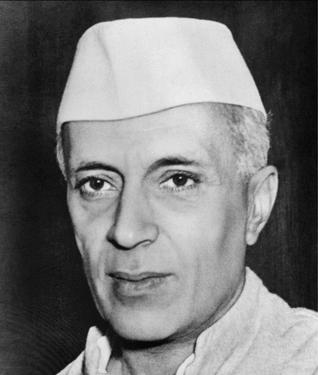By Pamela Toler (Regular Contributor)

In March, 1919, India’s Imperial Legislative Council passed the repressive legislation known as the Rowlatt Acts. The new laws continued the special wartime powers of the Defense of India Act, which had been intended to protect India against wartime agitators, and aimed them at India’s nationalist movement.
At the time the Rowlatt Acts were put in place, Jawaharlal Nehru (1889-1964) was a prime example of the “brown Englishmen” that Thomas Babington Macauley had described as the goal of Western education in India. Educated at Harrow and Cambridge, he practised law with his father, the prominent barrister and nationalist leader Motilal Nehru, and enjoyed a lifestyle that was luxurious by both Indian and European standards. At his father’s urging, Nehru had joined the Indian National Congress on his return from England in 1918 but at first his involvement in the nationalist movement was at best perfunctory.
That changed when Mohandas Gandhi called on Indians to “refuse civilly to obey” the newly passed Rowlatt Acts. In the Sikh city of Amritsar, Gandhi’s call for a national day of work stoppage escalated into a spiral of arrest, protests and violence that ended in the massacre of thousands of Indians who had gather for a religious observance in a public park called Jallianwalah Bagh.
When Nehru overheard General R. H Dyer boasting about his role in the massacre,e he was outraged. He flung himself into the independence movement, touring rural India, organizing volunteers and making public speeches. It was then, he wrote in his autobiography, that “I experienced the thrill of mass feeling, the power of influencing the masses.”
The British imprisoned Nehru for his nationalist activities for the first time in 1921. Arrested nine times, he spent 18 of the next 25 years in jail for his participation in Gandhi’s non-violent non-cooperation (satyagraha) campaigns. He used his time in prison to study and write, transforming himself from a “brown Englishman” into an Indian scholar-politician. He practiced yoga, studied the Baghavat-Gita (and Marxist political theory) and replaced his suits and top hat with clothing made from khadi (homespun).
Gandhi handpicked Nehru as India’s first prime minister, despite substantial differences in their vision of India’s future. They agreed that poverty would be India’s greatest challenge after independence, but disagreed on the solution. Gandhi looked to India’s past for the answer, which he believed lay in self-sufficiency at the village level, with a spinning wheel in every hut. Nehru, whose exposure to what he described as “this vast multitude of semi-naked sons and daughters of India” had led him to the principles of Fabian socialism, looked for national self-sufficiency, based on “tractors and big machinery.” When Gandhi accused Nehru of being unfaithful to his vision of a “harmonious village India”, Nehru countered that he did “not understand why a village should necessarily embody truth and non-violence”.
When India achieved independence from Great Britain in 1947, Nehru became its the first prime minister and minister for external affairs, a dual position he held until his death in 1964. He developed a policy of “positive neutrality” in regard to the Cold War, and served as a key spokesperson for the unaligned countries of Asia and Africa. He committed India to a policy of industrialization, a reorganization of its states on a linguistic basis, and the development of a casteless, secular state.
